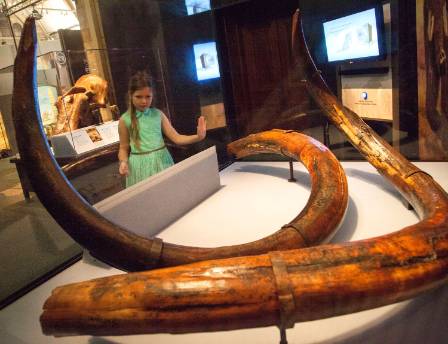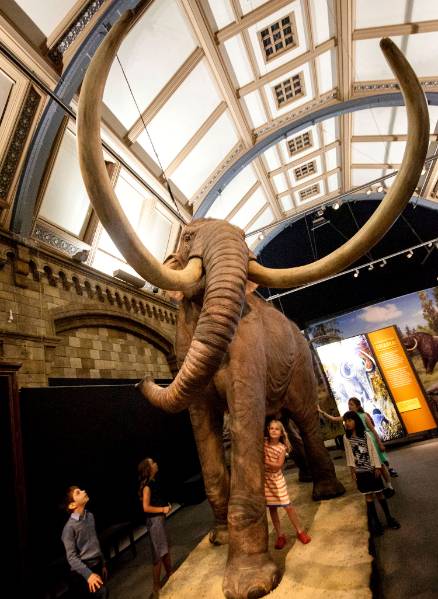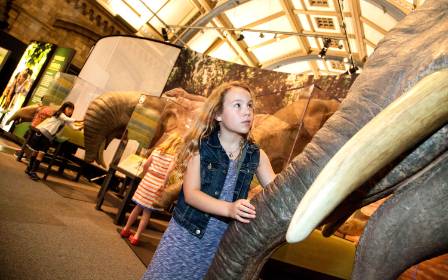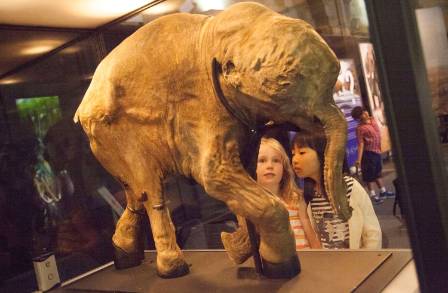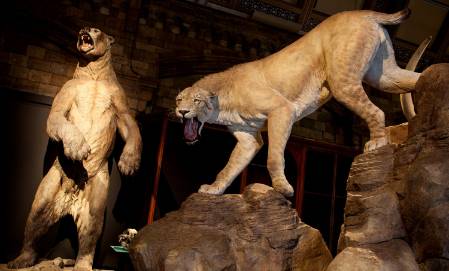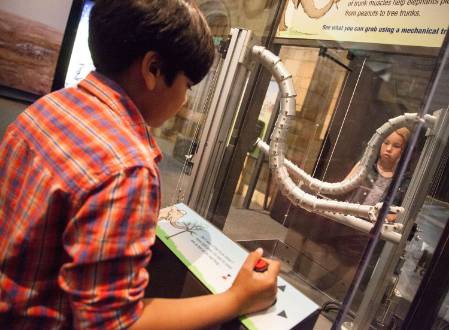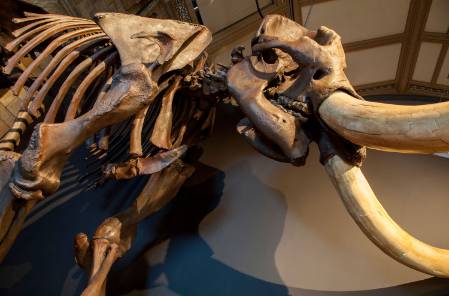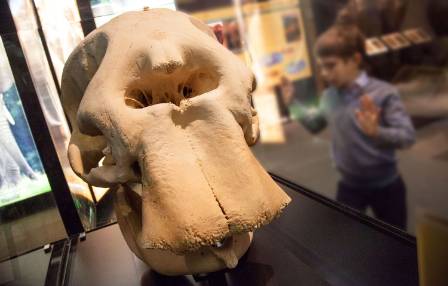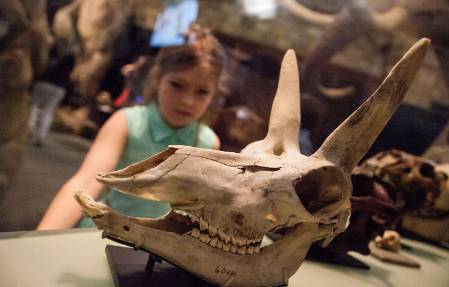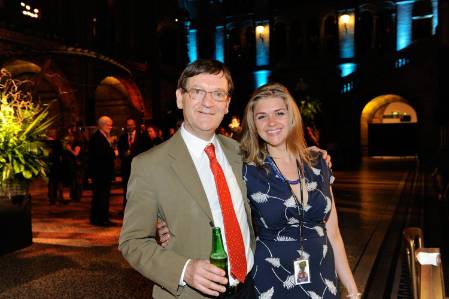They are leaving. We have until Sunday evening to enjoy the Mammoths:Ice Age Giants exhibition here in the Museum's Waterhouse Gallery.
It has felt good having these enigmatic creatures and their friends and relatives with us over the summer and a privilege to showcase baby Lyuba. Many thousands of visitors have loved stepping into their world, if only for a brief while, to learn about their lives and legacy. And the exhibition has far exceeded our expectations.
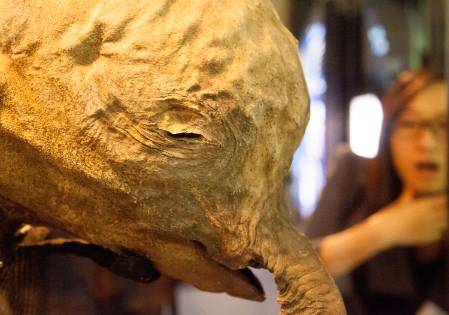 Baby face: Little Lyuba, the world's most complete mammoth, returns to northern Siberia next week after the Mammoths exhibition closes here on Sunday 7 September.
Baby face: Little Lyuba, the world's most complete mammoth, returns to northern Siberia next week after the Mammoths exhibition closes here on Sunday 7 September.
After the gallery doors shut on Sunday, the exhibition will be dismantled and most of it makes it way to Cleveland, USA, where it opens next.
The precious Lyuba specimen, however, flies back to the Shemanovsky Museum in Salekhard, Russia. But not before our mammoth experts Adrian Lister and Tori Herridge sneak a closer scientific look on Monday, when she's out of her display case. Adrian will also grab the chance to examine the massive Columbian mammoth skull specimen (below) before it goes.
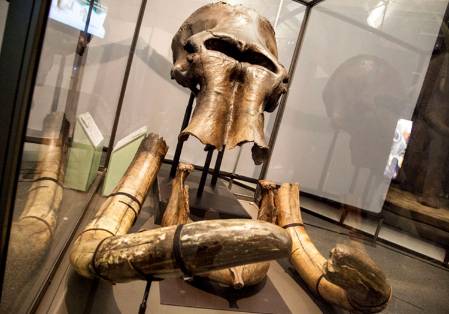
This enormous Columbian mammoth's skull and tusks were dug up in 1960 in Wyoming. Our mammoth expert Adrian Lister will take a closer look before it leaves us.
Enjoy a few last exhibition highlights in these pictures.
Neverending tusks: After Sunday most of the specimens and models will be packed up in 11 enormous shipping containers to sail away to Cleveland, USA, where the exhibition opens next.
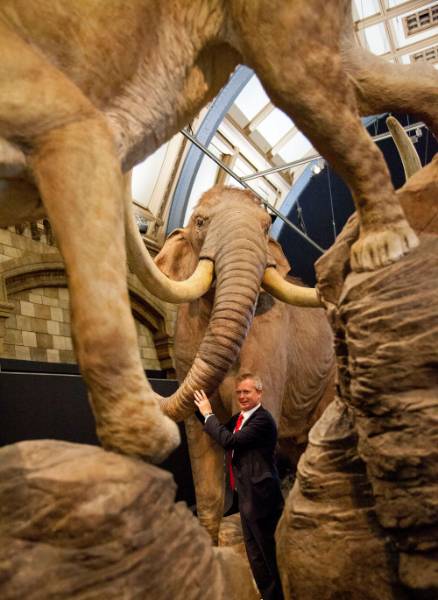 Lost in mammoth space... The exhibition has been a hit with kids and adults alike.
Lost in mammoth space... The exhibition has been a hit with kids and adults alike.
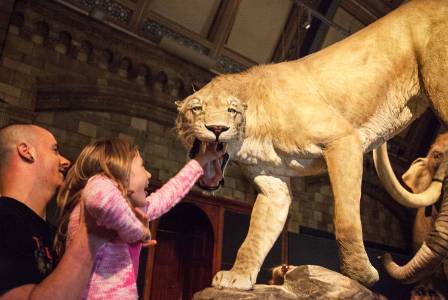 Children rush voraciously to touch the big ice age models in the exhibition and be photographed with the iconic beasts (but bear in mind Lyuba can't be touched or photographed as she is the real thing and too fragile).
Children rush voraciously to touch the big ice age models in the exhibition and be photographed with the iconic beasts (but bear in mind Lyuba can't be touched or photographed as she is the real thing and too fragile).
Accompanying the exhibition this summer have been the entertaining Mammoths workshops, which continue to run through the autumn.
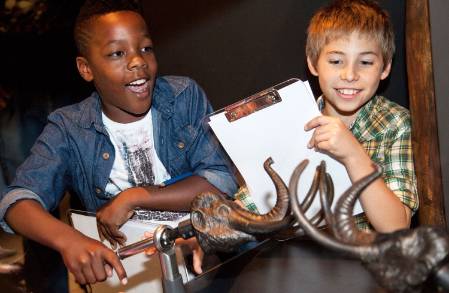 More interactive fun continues at our drop-in Hands on Mammoths workshops through the autumn.
More interactive fun continues at our drop-in Hands on Mammoths workshops through the autumn.
You can find out more about why mammoths disappeared in our Last of the Mammoths video on YouTube. And there are amazing exhibits lurking in our permanent Mammals gallery, including London's Ilford mammoth.



